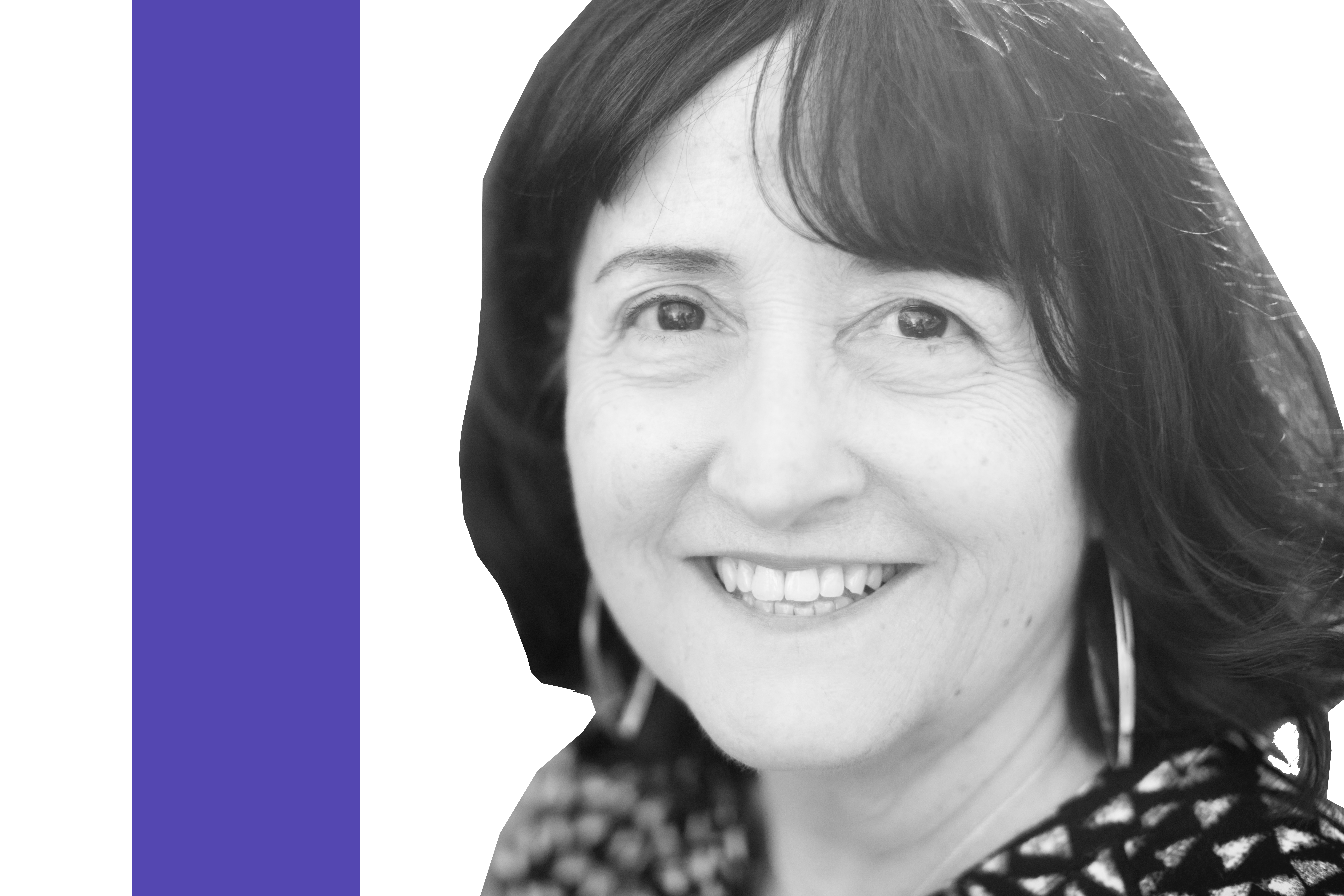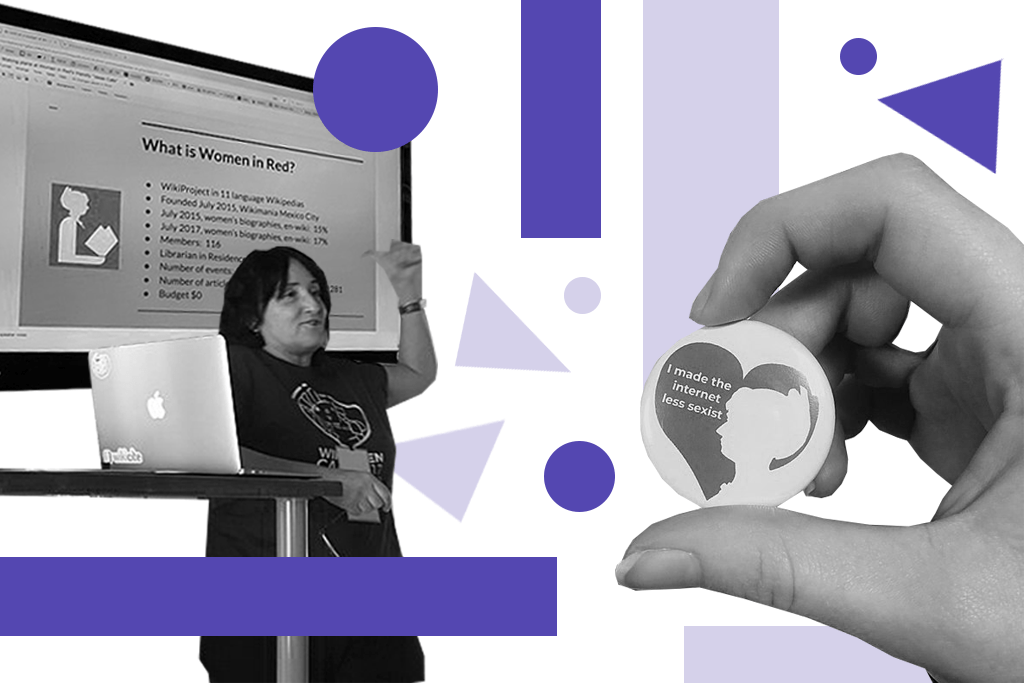All of the information found on Wikipedia is created and shared by volunteers around the world. However, since 2020, only 15% of these contributors are women. This imbalance has a real impact on how information is covered and presented on the world’s largest online encyclopedia. This problem is often called the “gender gap” and is well-known across Wikipedia and the wider Wikimedia movement.
In 2011, volunteer editors on English Wikipedia came together during Women’s History Month and asked themselves, “What would it look like if we focused on just women’s biographies this month?”
The group grew each year and started an annual tradition in March of creating and improving Wikipedia articles about women — making unknown women known and helping to turn red links blue. (On Wikipedia, red links or URLs indicate that an article is missing from the encyclopedia.)
At the same time, individual editors created theme-based “WikiProjects”, focused on creating and improving articles in a particular area all year long, such as WikiProject Women’s History (2011), WikiProject Women scientists (2012), WikiProject Women artists (2013), and WikiProject Women writers (2014).
In December 2014, the group’s mission was reignited when an academic article, “First Women, Second Sex: Gender Bias in Wikipedia“, highlighted that only 15.5% of biographies on English Wikipedia were about women. Nearly all of the rest were about men. “This really caught the attention of some editors, including me. Previously, we could see there was a disparity, but having a number, a percentage, was really motivating to think even more strategically than we had before,” Rosie Stephenson-Goodknight told me.
On the heels of the report, Stephenson-Goodknight, along with fellow volunteer Roger Bamkin, officially founded WikiProject Women in Red in July 2015 during Wikimania Mexico. The initiative, made up of editors from all genders around the world, focuses on reducing systemic bias across the Wikimedia movement and on Wikimedia projects. Specifically, the project aims to increase the percentage of women’s biographies on Wikipedia, as well as other articles about women’s representation, including women’s works and women’s issues.
Nearly eight years later, Women in Red has helped tremendously in closing the gender gap. Their hard work and perseverance have significantly increased the number of women’s biographies on English Wikipedia, adding over 200,000 new articles. This enormous contribution has led the number of women’s biographies to increase from 15% to 19.47%. Yet, of nearly 2 million biographies on Wikipedia, only around 400,000 are about women presently. Closing the gap still has a ways to go — thankfully people like Rosie and projects like Women in Red exist.
I chatted with Rosie to find out more about the gender gap, what Open the Knowledge means to her, and how we can all take part in increasing the representation of women online.
Q: Almost 10 years after its creation, what inspires you to continue being part of Women in Red?
Rosie: One thing that inspires me, and I believe makes the project so successful, is how easy it is to make an impact. We tell people who join – we don’t care who you are, or where you are – just every day, write an article about a woman. Most of our project’s work is done by individuals, in the comfort of their own homes.
When we started this project, we noticed that only 12 percent of Wikipedia editors were women. Instead of trying to focus on increasing that number, we focus instead on increasing information and content about women. We invite editors – no matter their gender – to come and help close the content gender gap. With Women in Red, we noticed that it wasn’t just women, but people of all genders, who were interested in creating biographies of women on Wikipedia.

Rosie Stephenson-Goodknight
![]()
We tell people who join, we don’t care who you are, or where you are, just every day, write an article about a woman.
Q: You’re a long-time editor on Wikipedia – with over 5000 articles written. What gets you excited about Wikipedia and other Wikimedia projects as a place to create change?
Rosie: Researching and then writing articles about women who were interesting, quirky, or brave in history, like Toofie Lauder and Deolinda Rodrigues, is a strong motivator. I live in a town associated with the 1849 California Gold Rush, and I think of myself as a miner, searching for and then writing about women’s stories that might otherwise be lost to all of us. In fact, Women in Red volunteers have created hundreds of lists capturing these names. What’s also motivating for me is being part of this project – which is available in 33 language Wikipedias – and getting inspired by other people who are really interested in the initiative. I believe that it’s important that society in general understands that there are all these women that deserve attention and recognition. Of course, this is personal too, as I have a granddaughter, and I want her to go on Wikipedia and see more women’s names and their stories than were there before.
![]()
I have a granddaughter, and I want her to go on Wikipedia and see more women’s names and their stories than were there before.
Q: How can people get involved in Women in Red? What is one action item someone could take today to help close knowledge gaps on Wikipedia?
Rosie: When it comes to increasing the awareness and notability of women on Wikipedia, findability is important. What does that mean? Well, you might write this biography about, for example, “Jane Doe”, but if there aren’t other articles that link to “Jane Doe” it narrows the possibility of someone stumbling on and reading her biography as they are clicking through Wikipedia. An easy way to fix this is to add more links! If you find an article on Wikipedia that mentions her, add a link. If she’s relevant in another article, but not mentioned, add a link. For example, if there’s a “Notable persons” section in “Jane Doe’s” hometown, add a link.
Need help with that? Check out Women in Red’s talk page and join in on the conversation. All our discussions are on-wiki, so no need to join an extra social media channel or mailing list to participate in this activism addressing society’s systemic bias. For tips on how to write about women, check out Women in Red’s Resources page, which includes volunteer-written essays, and also spotlights our Librarian in Residence, Sue Barnum, who assists editors with references.
Learn more about Women in Red and get involved here.
. . .
Does the content on Wikipedia reflect the world’s diversity?
Every day, volunteers all over the world—like the ones featured on this blog—work on knowledge equity initiatives to help close knowledge gaps. Want to understand why this work matters? Watch this video, part of our A Wiki Minute series, to learn more.
. . .
This blog is part of Open the Knowledge: Stories, a series which features volunteers from the Wikimedia movement who are helping the world truly find the sum of all human knowledge on Wikimedia projects. If you want to know more about what knowledge equity is, why it matters, and how you can help us achieve it, join us at Open the Knowledge.
. . .
This interview has been edited for clarity and length.
Barbara Kandek is a Communications Associate at the Wikimedia Foundation.

